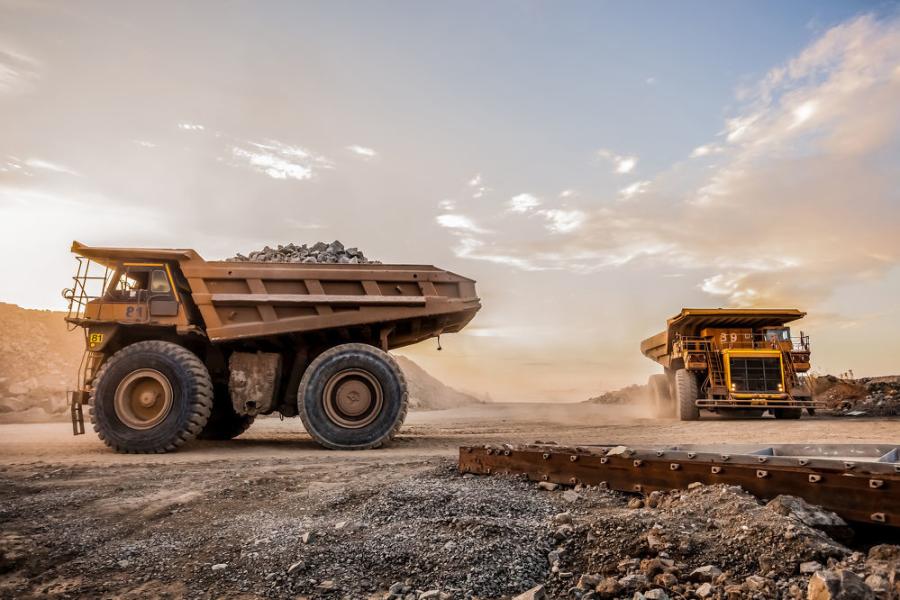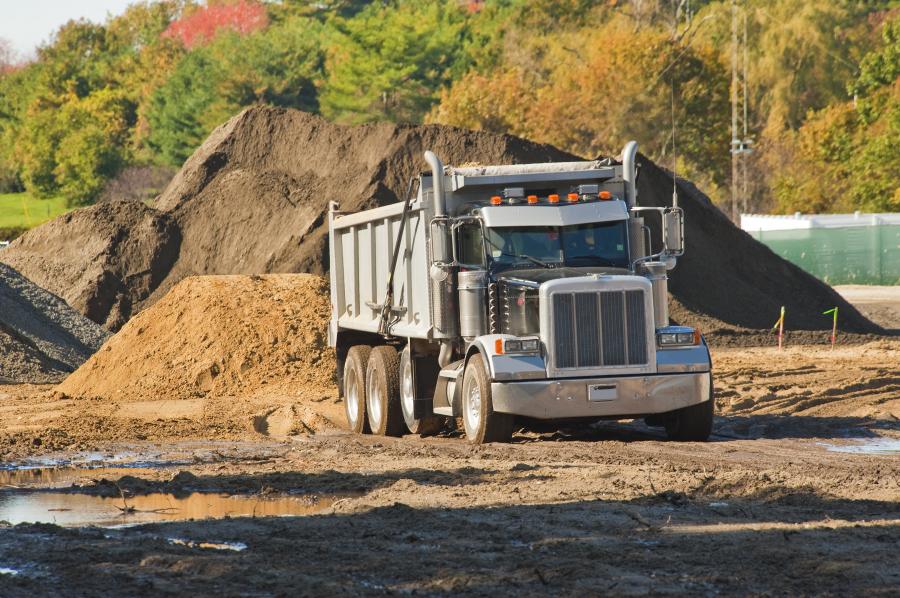Heavy equipment dealers and contractors report that despite some roadblocks the machinery sector is expected to rebound quickly to accommodate increased activity in 2021.
Despite the ongoing coronavirus crisis and this year's economic downturn, Association of Equipment Manufacturers member CEOs are optimistic about their industry. In the third AEM member survey conducted since the pandemic started, 75 percent of respondents predict industry-wide revenue growth through October 2021.
One machinery and equipment valuation manager also sees resiliency in construction spending during the pandemic.
Jerome Galaszewski, who manages the machinery and equipment valuation operations for Gordon Brothers, Boston, Mass., writes that construction spending has been more resilient than most other types of commercial.
"Construction activities related to public spending have increased over the pandemic period by 0.3 percent since February and, compared to the prior-year period, were up 6.2 percent in June," he noted.
"Although public spending was strong through May and June, public construction spending declined by 0.7 percent driven primarily by large cuts in education-related projects as well as highway and street construction."
Prior to the COVID-19 pandemic, projections for 2020 were strong for construction machinery sales and general market activity.
Short-term expectations changed drastically before secondary-market equipment demand and sales began to show signs of recovery and stabilization.
Late summer auction data showed "a slow uptick in auction sale prices for standard yellow iron and construction machinery," noted Galaszewski.
"The available supply of equipment should, in many cases, allow buyers previously in the market for new assets the opportunity to opt for used equipment as a cost-saving measure."
He sees renting or leasing as a continuing alternative to purchasing new or used equipment, but likely at a much lower rate than pre-COVID-19.
"So far in the COVID-19-impacted period, both rental revenues and sales have been negatively impacted," is Galaszewski's blunt assessment.
The Not-So-Pretty Numbers
Dodge Data & Analytics predicts that total U.S. construction starts will increase 4 percent in 2021, to $771 billion.
"The COVID-19 pandemic and recession has had a profound impact on the U.S. economy, leading to a deep drop-off in construction starts in the first half of 2020," said Richard Branch, Dodge chief economist.
"While the recovery is under way, the road to full recovery will be long and fraught with potential potholes. After losing an estimated 14 percent in 2020 to $738 billion, total construction starts will regain just 4 percent in 2021."
"Uncertainty surrounding the next wave of COVID-19 infections, and delayed fiscal stimulus, will lead to a slow and jagged recovery in 2021."
Branch predicts business and consumer confidence will improve over the year as further stimulus comes in early 2021 and a vaccine is approved and becomes more widely distributed.
But, he cautioned, "construction markets have been deeply scarred and will take considerable time to fully recover."
Dodge lays out a pattern of construction starts for specific segments:
- Public works construction starts will see little improvement as 2021 begins. The sluggishness is attributed to continued uncertainty surrounding additional federal aid for state and local areas. "Additionally, the unfinished appropriations process for fiscal year 2021, which began October 1, raises doubt on the sector's ability to post a strong gain in 2021. Public works construction starts will be flat over the year."
- Electric utilities/gas plants will gain 35 percent in 2021, led by expected groundbreakings for several large LNG export facilities and an increasing number of wind farms.
Ken Simonson, AGC's chief economist, charts 229,000 job openings in construction, not seasonally adjusted, at the end of September.
That's a drop of 31 percent from the 333,000 openings in September 2019, according to U.S. Bureau of Labor Statistics data released in its latest Job Openings and Labor Turnover Survey (JOLTS) report.
September was the seventh consecutive month in which openings declined year over year, in most cases by more than 20 percent, reported Simonson.
Hires in September totaled 369,000, down 16 percent year over year. Layoffs and discharges plunged 55 percent year over year to 101,000.
He noted that's the smallest monthly total in the 20-year history of the series. Quits shrank by 16 percent year over year to 169,000.
Creativity During Downturn
It is estimated that 2020 sales of heavy equipment will show a 4 percent decline in comparison to 2019. However, the sector is expected to come out of the pandemic ready to rebound in 2021.
Management consulting firm DuckerFrontier predicts that with backlogs, both contractors and their machinery will be extremely busy next year.
The firm found in discussions with heavy equipment dealers and end users that despite some roadblocks the machinery sector is expected to rebound quickly to accommodate the increased activity.
However, with many equipment and components factories shut down, "rapid normalization" may not happen for the industry. Equipment shortages may result, forcing contractors to get creative in acquiring necessary heavy machinery.
Closely monitoring a number of alternative acquisition models, the consulting firm details transactions in which contractors could work with equipment owners in independent rental scenarios.
Other contractors might hire the services of a third-party whose role is to match potential renters with rental providers.
Both of these models have been used on a limited basis within the heavy equipment industry, according to the firm. DuckerFrontier sees growth potential in these alternative equipment acquisition routes.
"We expect the equipment rental market to absorb much of this excess demand. This method allows companies to access the equipment needed for current work without accepting the long-term risk of ownership."
The bottom line: Modest growth of 3 to 5 percent over 2021 is predicted.
The Appeal of Renting
The American Rental Association (ARA) forecasts construction and industrial rental revenue to take a "significant hit" by the end of this year but then rebound through 2024.
A 13.3-percent drop to $33.8 billion is expected in 2020, and a 3.3-percent decline is forecast for 2021 before growth of 11.2 percent in 2022.
"The forecast shows us how hard the coronavirus pandemic hit the equipment and event rental industry," said John McClelland, ARA vice president for government affairs and chief economist.
"Hopefully 2021 will see us getting back some of the revenue losses we experienced in the equipment and general tool segments."
The latest forecast released by the association on Nov. 12 calls for 6.8 percent equipment rental industry growth in 2023 and 4.8 percent in 2024 to reach $59.7 billion.
ARA reports investment in equipment is significantly down in 2020, with a 43 percent decrease to $8.166 billion. Equipment spending is forecast to rebound by 17.4 percent in 2021 and by 46.3 percent in 2022 to surpass annual investment of $14 billion, according to the association.
Gearing Up for Better Days
Though the construction equipment sector has seen a dip in sales this year, slight increases are expected in 2021, and the market should be worth well over $200 billion in five years, according to one report.
Data collected by market research platform developer MarketsandMarkets Inc. shows that the global construction equipment market size is projected to reach nearly $170 billion this year, and have a value of $205 billion by 2025.
Increased demand for dump trucks, including hybrid trucks in particular, is expected to drive the largest slice of the construction equipment sales pie.
According to the report, a major chunk of the global electric dump truck market includes hybrid mining dump trucks with higher capacity, power output, fuel efficiency and reduced maintenance cost.
Compact excavators used in urban civil engineering, snow removal, forestry and landscaping will see higher demand as well. This demand is driven by their design and maneuverability in a variety of applications.
The United States construction industry is expected to grow at a decent rate against federal spending cutbacks, according to the research. Low-interest rate loans specifically written for the acquisition of construction equipment will encourage investments.
The AGC estimated U.S. construction market growth in August at more than 3 percent. The association attributed the numbers to increases in residential construction and construction spending.
That growth in the residential sector, coupled with an expected major investment in infrastructure projects, is expected to drive the sales of crawler excavators and wheeled loaders across the country.
"The increasing number of infrastructure projects and mega construction projects are further anticipated to fuel the demand for construction equipment during the forecast period," according to the report. CEG
Lucy Perry
Lucy Perry has 30 years of experience covering the U.S. construction industry. She has served as Editor of paving and lifting magazines, and has created content for many national and international construction trade publications. A native of Baton Rouge, Louisiana, she has a Journalism degree from Louisiana State University, and is an avid fan of all LSU sports. She resides in Kansas City, Missouri, with her husband, who has turned her into a major fan of the NFL Kansas City Chiefs. When she's not chasing after Lucy, their dachshund, Lucy likes to create mixed-media art.
Read more from Lucy Perry here.
Today's top stories
















